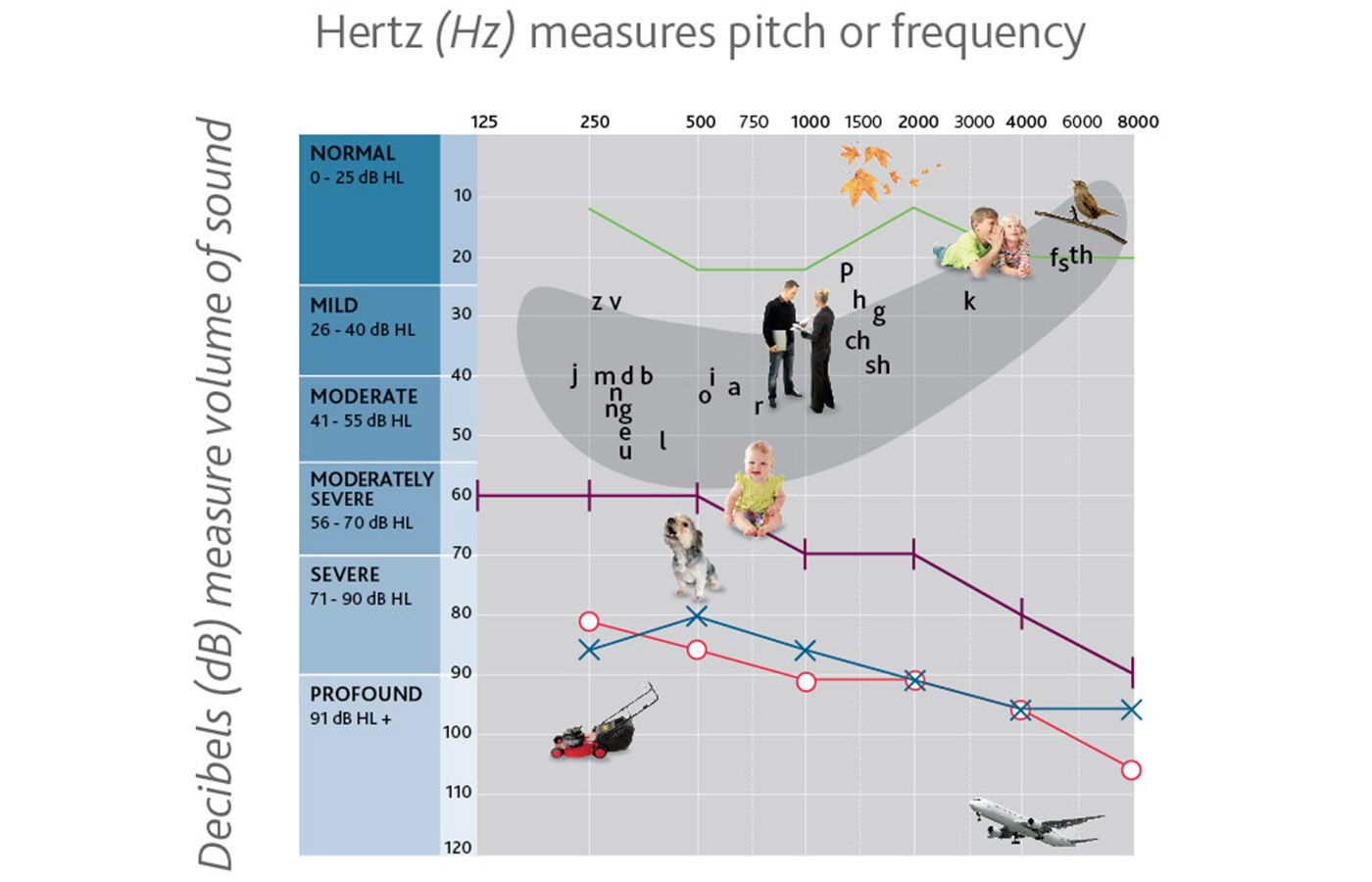Understanding the audiogram
An audiogram helps diagnose hearing loss. Learn what it is, why it's important and what it represents.

What you'll find on this page
- An overview of what an audiogram is.
- Details on what an audiogram can tell you.
- Information on what an audiogram can indicate.
What is an audiogram?
After your appointment with a hearing health professional, you or your child will most likely undergo hearing tests. An audiogram is a chart that shows the results of these tests and how well you or your child hears sound. It shows the softest sounds heard at different pitches and frequencies.
The audiogram helps to diagnose the degree and type of hearing loss, as well as help identify possible treatments.
An overview of an audiogram
Your hearing health professional will go through your audiogram, explaining what each result means. To help, here's an overview:
The pictures and letters in the chart above represent a normal hearing range at different volume and pitch levels. These range from very soft, like a whisper, to very loud, like a plane.
When you look at an audiogram, you’ll see a graph with various lines and symbols. Each one represents a measurement of hearing:
Volume, or intensity, is measured in decibels (dB), marked from top to bottom on the chart.
Softer sounds, like the sounds of leaves rustling, start at the top of the chart. Louder sounds, like a lawnmower, occur at higher decibels at the bottom of the chart.
Pitch, or frequency, is measured in hertz (Hz) and marked from left to right.
Each vertical line shows a different frequency of sound. The further to the right, the higher the pitch, like a bird chirping.
Red and blue lines and letters represent test results
A blue X line (left ear) and a red O line (right ear) represents your air conduction test results (the level at which you just hear when sound travels through the air, typically measured using headphones). The results of a bone conduction test are marked using a blue > line (left ear) and a red < line (right ear).
Any difference between your air conduction and bone conduction test results indicate an 'air-bone gap.' This gap may mean there's a problem in the outer or middle ear. No gap may mean there's a problem in the inner ear (cochlea).
Speech recognition and speech discrimination tests
Another type of test, called speech recognition or speech discrimination, checks the quality of hearing to determine how well you can hear and understand normal conversations. The results are represented as a percentage and may appear on your audiogram.
What do your results mean?
If your audiogram shows an issue, your hearing health professional will explain the type and degree of hearing loss along with the best possible treatments. Ask as many questions as necessary to understand what it means for you.
Find a hearing implant specialist near you
Disclaimer
Please seek advice from your health professional about treatments for hearing loss. Outcomes may vary, and your health professional will advise you about the factors which could affect your outcome. Always follow the directions for use. Not all products are available in all countries. Please contact your local Cochlear representative for product information.
For a full list of Cochlear’s trademarks, please visit our Terms of Use page.







